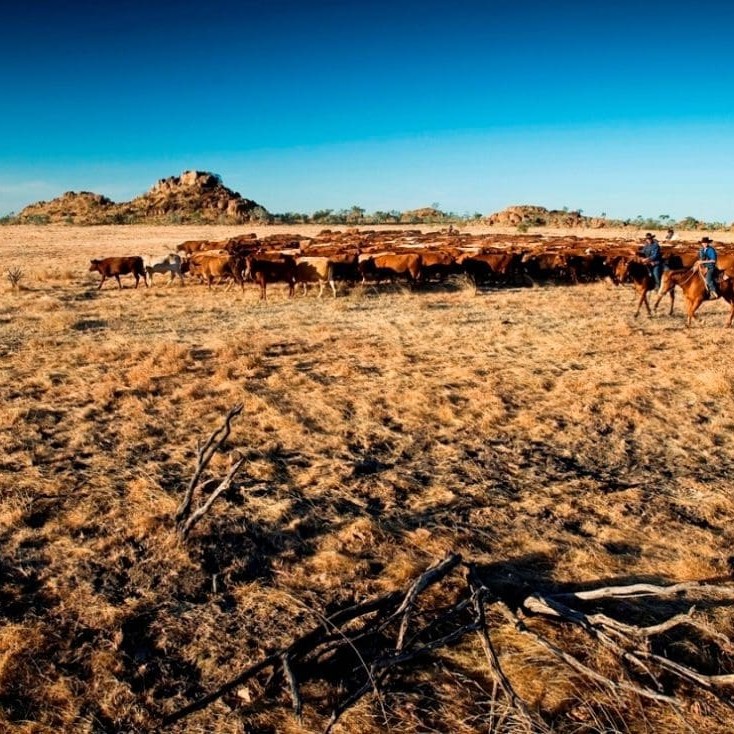
MANDATORY financial reporting provided to the market by one of the North Australian Pastoral Company’s largest shareholders reveals a tougher 12 months for one of the nation's larger corporate-scale beef producers.
NAPCo recorded a loss of $5.68 million for the 12 months ended December 31, compared with a profit of $11.82 million the previous year.
As a privately-held company, NAPCo is not obliged to report its annual financial details, but one of its largest investors, UK-based listed agribusiness firm, MP Evans, must include NAPCo results as part of its annual reporting. MP Evans holds 34.4pc of NAPCo’s shares.
In its preliminary 2012-year report to the market, MP Evans says while NAPCo reported strong operating cash flows, higher sales were more than offset by (unrealised) lower year-end herd valuation, resulting from lower than expected prices and lighter cattle weights.
NAPCo last year wrote-down the value of its herd by about $8.6 million, and also had to bring in an impairment charge, regarding the write-down of the value of its property assets, of $4.8 million.
While on face value it appeared that NAPCo’s property revaluation was mild, compared with that announced by another large northern producer, AA Co in January, due to the impact of the live export crisis ($41m), NAPCo has in fact adjusted its property valuation over a period of years.
On top of last year’s $4.8 million property value impairment through the P&L, there was another $8 million written down against the asset revaluation. All up, the property write-down last year was about $12.8 million.
Geographically, NAPCo’s northern land assets are nowhere near as exposed to the live cattle export market as some other northern pastoral companies, and the company sells nil cattle into the live trade.
Nevertheless, the write-downs in property and herd values last year was to some extent impacted by the live export crisis.
 The most positive aspect of NAPCo’s performance last year was its operating cash flow, managing to generate $12.3 million in positive operating cash flow, up from $5.3 million the previous year. That improvement was largely because the company spent a lot less money on cattle purchases in 2012.
The most positive aspect of NAPCo’s performance last year was its operating cash flow, managing to generate $12.3 million in positive operating cash flow, up from $5.3 million the previous year. That improvement was largely because the company spent a lot less money on cattle purchases in 2012.
In response to a huge season in 2011, the company spent $5.9 million in early stages that year buying-in cattle to utilise a huge body of feed in the channel country and elsewhere, and to fill a ‘gap’ in calf numbers posted following the very dry 2008 year.
Last year, in contrast, outside cattle purchases declined to $1.3 million, as more company-bred calves started to again flow through the production system.
“It was also very difficult to buy young cattle for the right price last year,” NAPCo chief executive Nigel Alexander told Beef Central.
“But as it has turned out, that was probably fortuitous, because it turned out to be a very dry finish to the year last year, as everybody is aware,” Mr Alexander said.
While last year was only a ‘satisfactory’ year season-wise, and nowhere near as good as the year before, the company managed to maintain herd size.
NAPCo finished 2012 with a herd of 197,309 head, down marginally from the year before (197,590), regarded as close to full carrying capacity.
Because the company values at year-end, and does not accrue unbranded calves, the herd size figure can be a ‘moving feast’ across a yearly cycle, however, and could easily exceed 230,000 head if calculated at June 30.
In 2012 the company branded 62,500 calves, the highest seen since 2008, when seasonal fortunes started to decline sharply. This year’s budget forecast has pencilled-in 63,300 branded calves, through maintaining the core breeder herd.
Water improvements continue to take place to further build carrying capacity on breeding properties, with much of that concentrating on Alexandria on the Barkly Tableland. An additional 40 waters have been added at Alexandria over the past six years, spreading the grazing impact more evenly across the country.
This had probably provided some ‘insulation’ from larger drops in property valuation, Mr Alexander said. The company’s NT properties are now running about 12,000 more breeders than they did a decade ago, due solely to the provision of more waters, he said.
This year, about a third of Alexandria is described as ‘OK’, another third ‘marginal’ and the remainder, ‘poor.’
Likewise, NAPCo’s gulf country holdings are doing it very tough this year, on properties like Boomara and Cooloolah. In the Channel Country, two of the larger holdings, Cooraboolka and Marion Downs on the Georgina will effectively take no weaners at all this year.
“We anticipate finding a home for all of our male weaners this year, with Monkira on the Georgina in a little better shape, together with our Central Queensland and Maranoa properties,” Mr Alexander said. “But female weaners will be more of a challenge, but that’s where our Wainui feedlot near Dalby will play a greater role this year.”
- Next week: How NAPCo is using its Wainui feedlot as a valuable drought mitigation tool this year
